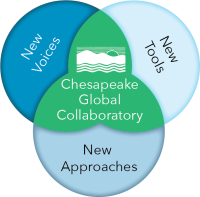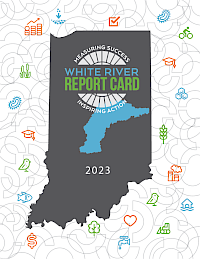Welcome, Anikka!

Please welcome our new Science Communication Scholar, Anikka Fife! Anikka is from Kent Island, MD and graduated from Salisbury University with a B.A. in Communications-Media Production and a B.A. in Environmental Studies. Her interdisciplinary interests focus on combining her artistic skillsets in media production with topics surrounding environmental science. Throughout undergrad, Anikka created educational outreach material, documentaries, and directed several field projects concerning the health of the Chesapeake Bay. Anikka enjoys creating new media art, painting, traveling, and expanding her environmental stewardship. In the future, Anikka hopes to further her educational journey by obtaining her J.D. in environmental law or pursuing a related master’s program. Ultimately, she hopes to obtain her Ph.D. and become a professor to help students pursue their interests and research.
Welcome, Jon!

Please welcome Dr. Jon Lefcheck, IAN's new Research Scientist! Jon is a community ecologist, biodiversity scientist, and statistician with an enduring affinity for seagrasses. He has worked in systems as diverse as coral reefs, mangroves, salt marshes, oyster reefs, and deep-sea hydrothermal vents. He regularly engages scientists, managers, and volunteers around the world to understand, monitor, conserve, and restore coastal ecosystems for the benefit of nature and people. Jon has published over 75 peer-reviewed articles, including in top-ranking journals like Science and Nature, and his work has been covered by popular media, including the New York Times, Washington Post, Smithsonian Magazine and National Public Radio. He received his Ph.D. in Marine Science from the College of William & Mary in 2015 and was a post-doctoral researcher at the Virginia Institute of Marine Science until 2017 and at the Bigelow Laboratory for Ocean Sciences until 2018. Before his current posting, he served as the Coordinating Scientist for the MarineGEO program at the Smithsonian Institution until 2023. In his spare time, he enjoys running and playing with his cat, Berlioz (who you can find in the acknowledgments of many of his articles). You can learn more about him at his website or on Twitter.
Setting the stage for the UMCES Chesapeake Global Collaboratory

The UMCES Chesapeake Global Collaboratory (CGC) is a new initiative to generate accelerated solutions to big problems by engaging diverse voices, novel approaches, and innovative tools. IAN is helping UMCES to design and facilitate the meetings and events to continue to advance this initiative with faculty and external partners. On August 3rd, a lunchtime webinar was held for all of UMCES to learn about the progress of the CGC and to participate in its ongoing development. An overview of the CGC was given followed by a presentation of specific research projects from UMCES faculty that would fall within the Collaboratory structure. The next milestone for this project will be the Chesapeake Global Collaboratory Summit, which will take place on September 28–29 at the Rita Rossi Colwell Center in Baltimore, MD. It will feature plenary speakers Fred Tutman, ShaShi Shekhar, and Dr. Erica Key.
The White River Report Card is complete!

The White River Alliance led a coalition of partners to create the 2023 White River Report Card, which was released at a community event in late June 2023. IAN has been advising the White River Alliance in the creation of the report card since 2021. The Upper White River Watershed encompasses a 2,720 square mile area within central Indiana, including Indianapolis, and extends across sixteen counties. This first White River Report Card was co-created with over 200 stakeholders from the community, business, industry, government, agricultural, conservation, and utility sectors. In addition to being a natural ecosystem, humans use and depend on the river for drinking water, irrigation, recreation, drainage, industry, wastewater, and many more. The Report Card includes sections for Land, Water, and Community, and includes 16 individual indicators scored for 9 regions within the Upper White River Watershed. The Upper White River received a C on its first report card, with relatively poor scores for Wetlands, Bacteria, and Environmental Burden, but better scores for Education, Aquatic Life, Sediment, and Education.